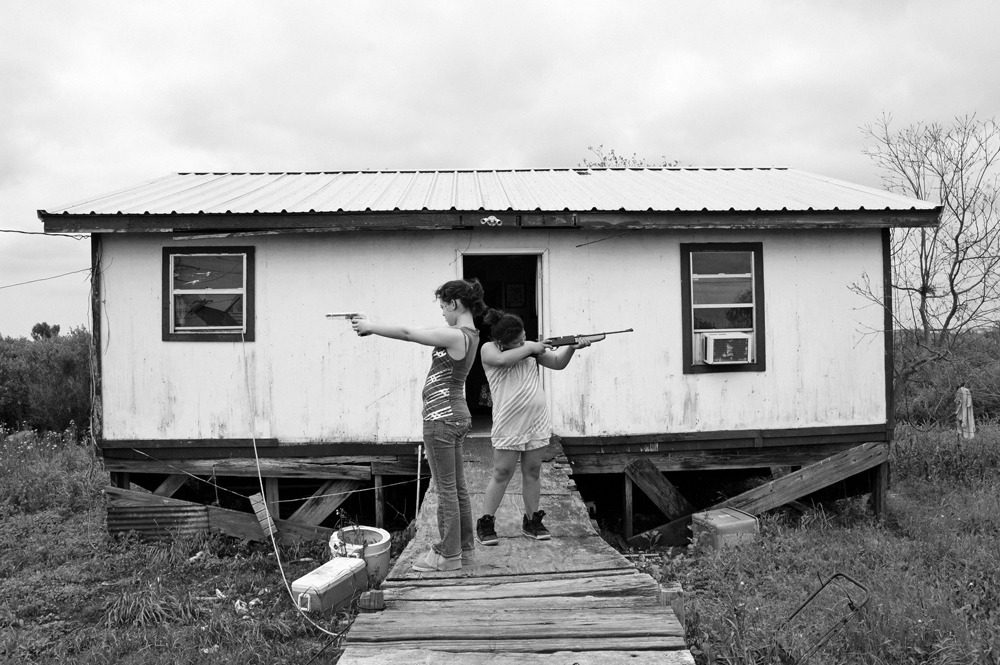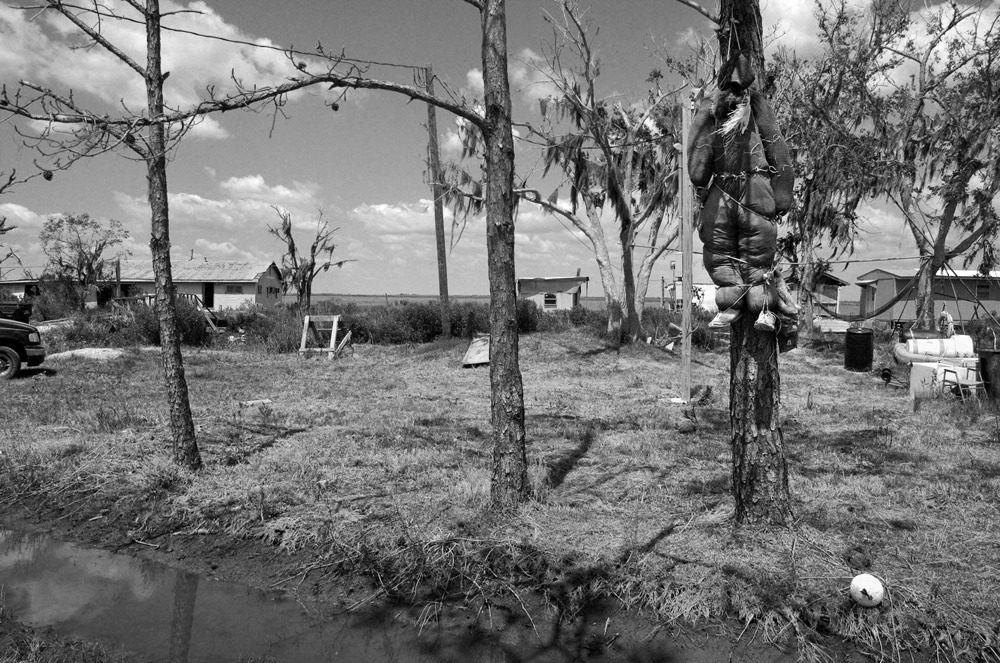We Were Here: Melinda Rose at Scott Edwards Gallery
Brooke Schueller reviews “Of the Rising Tide - A Photo Essay on the Vanishing Bayou Community of Isle de Jean Charles,” an exhibition of photographs by Melinda Rose.

Melinda Rose, You Shoot Your Way and..., 2014. Archival pigment print (Printed 2015). Courtesy the artist and Scott Edwards Gallery, New Orleans.
By no means an original subject, the wetlands and surrounding coastal communities of Louisiana have captivated the lenses, pens, and paintbrushes of artists for years. Isle de Jean Charles, however, has garnered particular, urgent attention as of late, as the finger-shaped island just two hours south of New Orleans precipitously washes into the Gulf of Mexico. Melinda Rose’s black-and-white photographs document the Choctaw-Chitimacha Indians, whose ancestors settled Isle de Jean Charles over two hundred years ago, in everyday scenes: children playing on the levee, old folks sitting on their porch, skeletal homes raised above the sinking ground on stilts. What’s remarkable about the series is not so much the photographer’s composition or framing, but rather her capacity to render a tragic environmental phenomenon that has played out over the course of several lifetimes in exceedingly human terms.
“Of the Rising Tide” reveals the Isle de Jean Charles adrift between its idyllic past—a time in which residents remember the island as blanketed by prairie grass and peppered with oak and cypress trees—and its tenuous future—in which most recognize the island as inevitably succumbing to the sea due to the confluence of rising tides, coastal erosion, and man-made destruction. In You Shoot Your Way And…, 2014, Rose conveys this insecurity through intersecting lines. Two women stand back to back before a ramshackle house with arms extended, guns pointed, their sights set on opposite points beyond the frame. The pathway that leads to the house splits the photo down the center, seemingly dividing two points in time—the past and the future—rendering the uncertain present as slipshod as the wooden bridge that leads to their door.

Melinda Rose, Last Halloween, 2005. Archival pigment print (Printed 2015). Courtesy the artist and Scott Edwards Gallery, New Orleans.
An impending sense of doom permeates. Perhaps the most jarring photograph of the series, Last Halloween, 2005, depicts a stuffed scarecrow-like effigy hanging by the scruff on a tree that projects over a narrow, muddy rivulet. Although the water in the creek is low, one imagines that with the right storm the scarecrow could be drowned in the swell sure to also swallow the nearby houses dotting the horizon line.
Rose seems to admire the people of Isle de Jean Charles for their resourceful, albeit anachronistic, relationship to the natural environment. However, it is this same reliance on the environment that guarantees their eventual ouster from Isle de Jean Charles, barring miraculous (and costly) intervention from the agents that engendered such rapid coastal erosion—the oil and gas industries and the Army Corps of Engineers. Though future generations may well regard them as little more than ghosts, in the present, Rose’s photos allow the Choctaw-Chitimacha of Isle de Jean Charles to defiantly proclaim: We existed. We were here. And this is what we have lost.
Editor's Note
“Of the Rising Tide - A Photo Essay on the Vanishing Bayou Community of Isle de Jean Charles” is on view through October 11, 2015 at Scott Edwards Gallery (2109 Decatur Street) in New Orleans.



